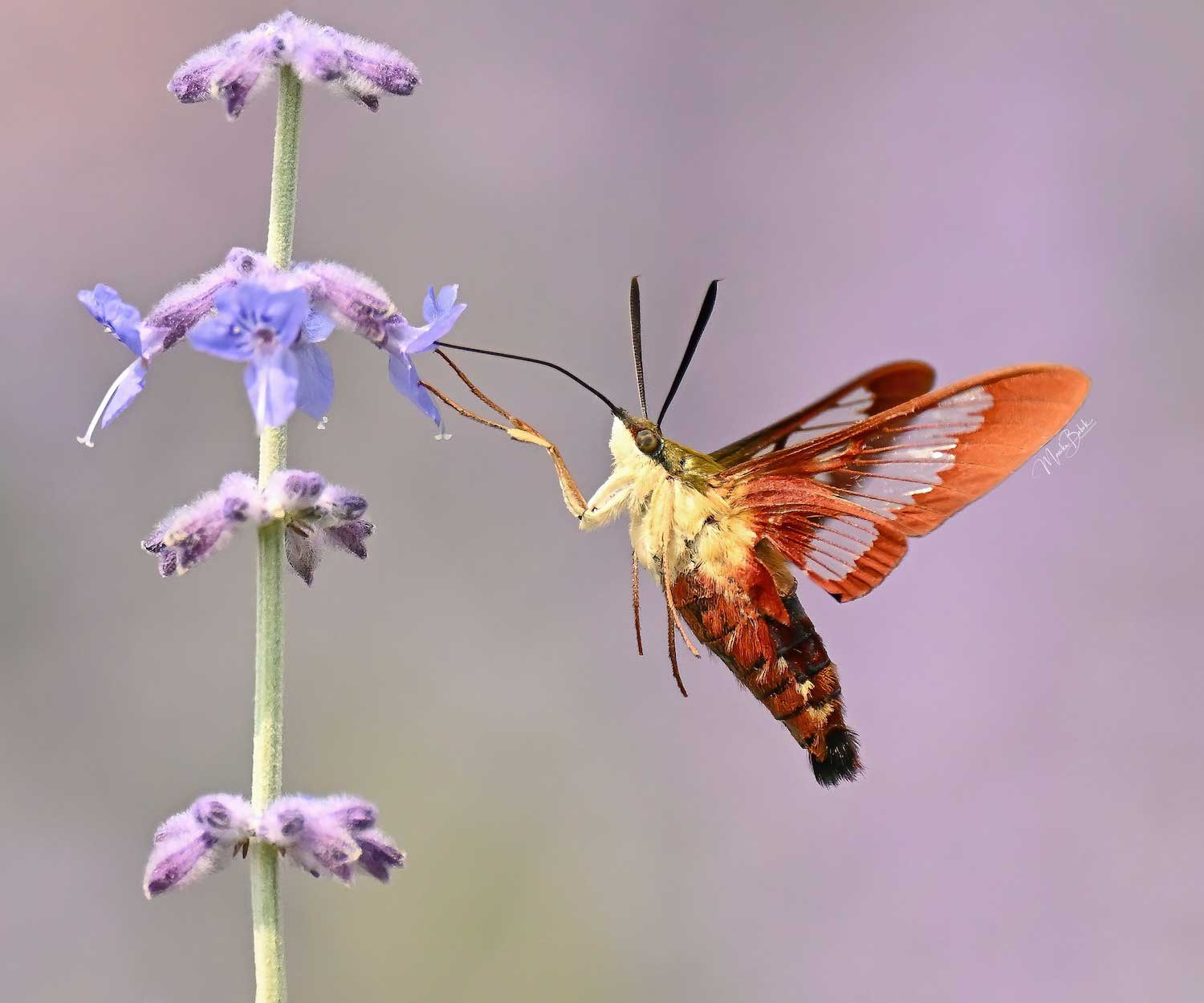It's a bird, or is it? Hummingbird moths mimic the birds in many ways

What looks like a hummingbird and flies like a hummingbird but most definitely is not a hummingbird? A hummingbird moth.
These moths didn't get their name by accident. They do look like hummingbirds — at least at quick glance — and they do hover and fly like hummingbirds. Many a person has confused a hummingbird moth for a hummingbird when spotting the flying creatures flitting about from flower to flower.
The term hummingbird moth actually applies to two species of moths: hummingbird clearwing moths and snowberry clearwing moths, according to the U.S. Forest Service. Both are sphinx moths, or hawk moths, which are moths characterized by their thick bodies; long, narrow wings; and aerobatic flying ability. Unlike most sphinx moths, however, hummingbird moths are diurnal, or active during the day, and not nocturnal.
The birds and moths are similar in appearance, but the birds are quite a bit larger than the moths, about 3 inches long compared with 1 1/2 inches long for the moths, according to Mass Audubon. Hummingbird clearwing moths have reddish-brown abdomens and olive-colored backs, while snowberry clearwing moths are black and yellow like a bumblebee. Both have clear wings with dark-colored edges.
These moths are called clearwings because of the appearance of their wings. Like all moths and butterflies, the hummingbird moths have wings covered in tiny scales. However, they lose the scales in patches of the wings, giving the clear appearance for which they are named.
Like hummingbirds and many other moths and butterflies, hummingbird moths drink nectar from flowers. While hummingbirds prefer red flowers, the moths show no such color preference. They will visit many different kinds of flowers, but they are partial to bee balm, phlox, honeysuckle and verbena, the Forest Service reports. In the larval stage, they have more specific food needs. As caterpillars, they eat the leaves of plants including honeysuckle, dogbane, cherries, hawthorn and plum. The caterpillars are a bright green color and will grow to be several inches long.
Like hummingbirds, hummingbird moths create a humming noise in flight. And they can hover in the air, a skill you are likely to see them put to use when sipping nectar from flowers, Birds & Blooms reports. As they hover, they extend their long, tongue-like proboscises — up to 2 times the length of their body — to access the nectar. When not in use, the proboscises roll up under their chins.
We can begin to see hummingbird moths beginning in late spring, but they are most active and likely to be seen in the summer as wildflowers and other plants begin to bloom. In northern climates like Will County, one generation of the moths lives each year, but in warmer spots there is usually more than one generation per year, the Forest Service reports.
After the adult moths mate, the female will lay eggs underneath the leaves of one of their larval plants. The bright green caterpillars feed on the leaves as they grow. Once they have reached their full size, the caterpillars drop onto the leaf litter on the ground, make their cocoon and pupate. They will overwinter as pupa, with the adult moths emerging in the spring.
Hummingbird moths are beloved because of their similarity to hummingbirds in both appearance and behavior, but they also play a crucial ecosystem role as pollinators, Mass Audubon reports. As they move from flower to flower, they incidentally help pollinate these plants, and because they are active later into the day than other pollinating insects like bees, they are particularly crucial pollinators of flowers that bloom late in the day.
